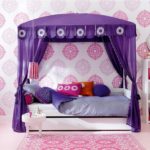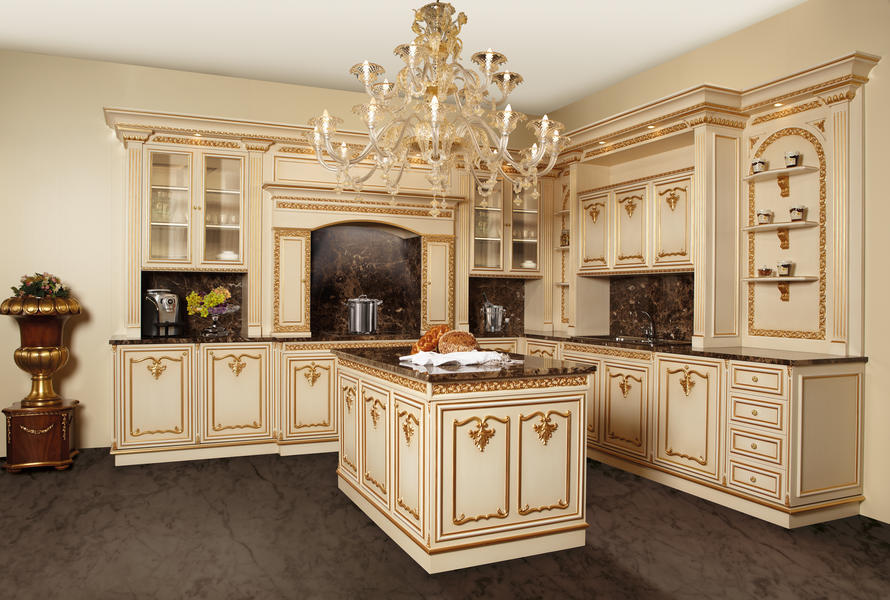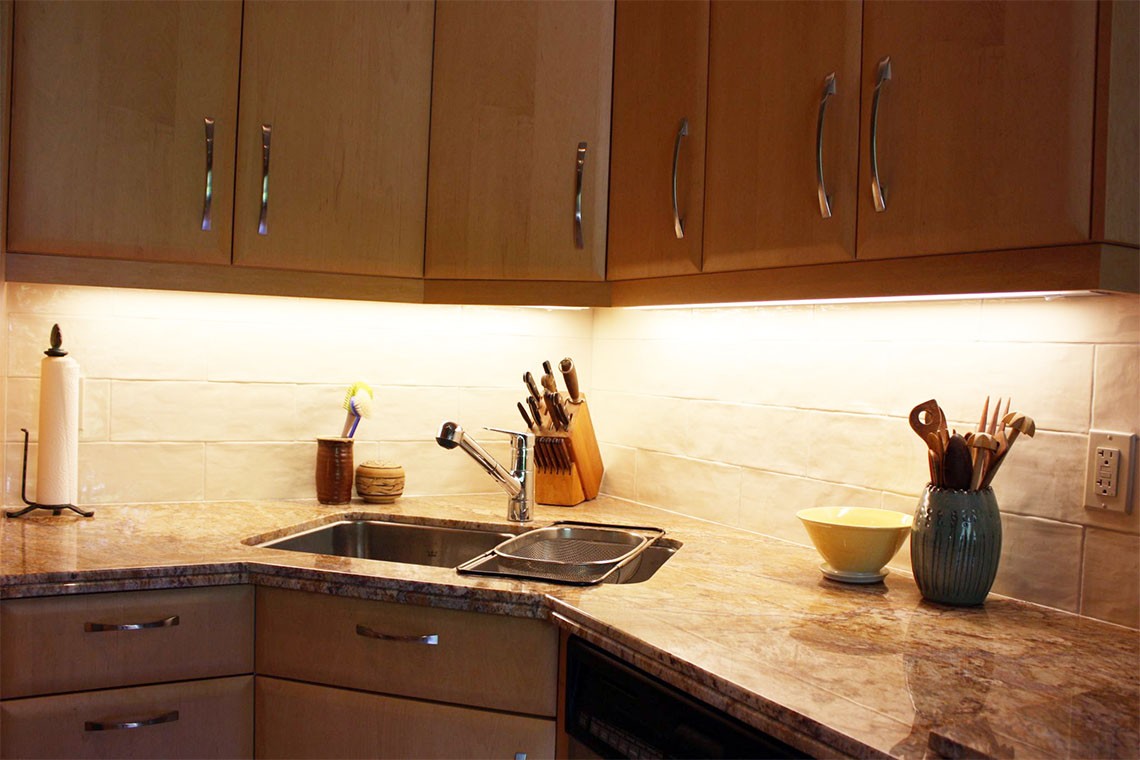Kitchen in oriental style
The East has always been shrouded in a veil of mystery - mysterious and alluring - reflected in all aspects of life. Features of clothing, holidays and, of course, bright, catchy interior design, imbued with national flavor.
It's nice to be in a kitchen decorated in oriental style. It has a special atmosphere that encourages intimate conversations. To repeat the idea, you don’t have to move to Turkey or Japan. It is enough to study the features of the style, use your imagination and be prepared to spend some time. All efforts will be rewarded, because as a result, a drop of bright oriental culture will appear in the house.
The content of the article
General features of oriental style
Oriental design is multifaceted, because it unites the spirit and flavor of several countries. It is by geographical location that the design is divided into two types - Asian and Arabic.
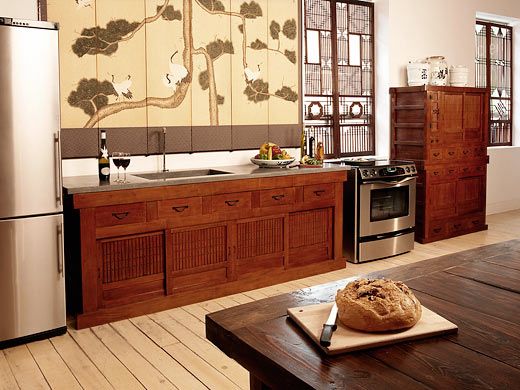
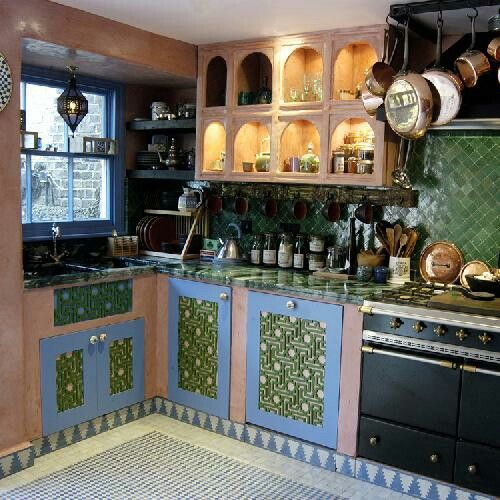
Despite the different position on the globe, the different mentality and climate, as well as the idea of both options, it has a number of similar characteristics:
- ethnic prints, patterns in wall and furniture decor;
- colorful curtains;
- a large amount of textiles;
- elegant screens or light partitions;
- vaulted ceilings and arches;
- natural materials;
- natural colors, shades of blue, brown and green are especially common;
- low furniture;
- instead of the usual chairs - voluminous pillows;
- elegant decor.
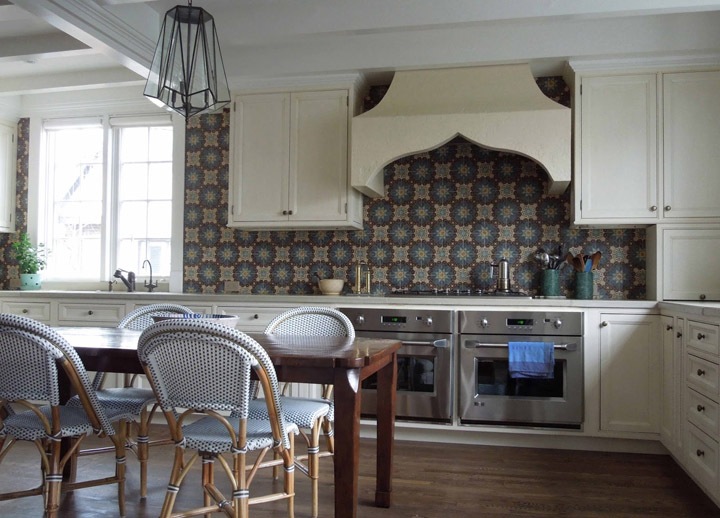
The interior, decorated with oriental flavor, features a rich color palette. Therefore, the main thing here is not to overdo it, otherwise there is a risk of getting not a harmonious design, but a room oversaturated with shades, causing a headache. Experts advise using 2-3 colors and several shades of them as a basis. A calm, neutral palette will also work.
The optimal combinations are:
- Milky, red tones, black, sand are the main colors of Japanese motifs.
- Golden, green, beige are the best choice for rooms in Chinese or Arabic style.
- Milky, cream, blue, turquoise are traditional tones inherent in both varieties.
Kitchen design in oriental style
To create a coherent space, coverings for walls, floors and ceilings must be selected in the same color scheme, which will reflect the character of a particular direction. Thus, Japan is characterized by some asceticism. Therefore, bright colors, relief decor, and an abundance of textiles would be inappropriate here. These attributes are characteristic of the North African direction, into which they fit very organically.
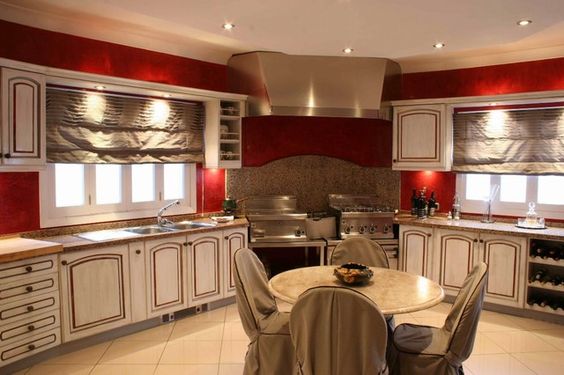
Surface finishing: walls, floor, ceiling
Let's look at the design features separately.
Floor
In both options, a laminate made of natural boards or porcelain tiles are laid on the floor. Natural materials fill the room with comfort and emphasize originality. Wood or granite are environmentally friendly, and with proper care they will last for many years.You can lay a mat made of real bamboo on the floor, which will emphasize the spirit of Asia, or a colorful carpet, which will convey the flavor of North Africa.
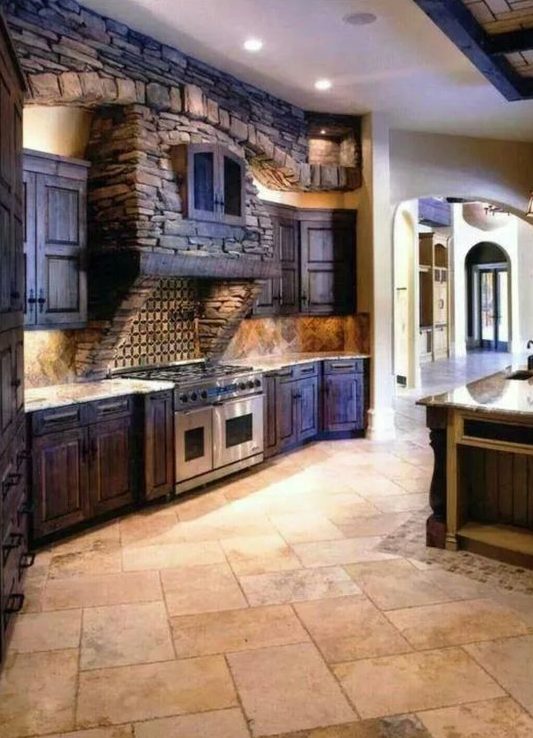
Porcelain stoneware slabs open up the possibility of imagination, because you can decorate them yourself with an ethnic pattern, or buy models already covered with a pattern.
Walls
Many housewives will be glad that in Asian-African design tiles are often used to decorate the apron. With its help, original ornaments are created; it is both the main finishing material and a means for decoration. Ceramic coating is easy to care for: just wipe regularly with a damp sponge. It is also not afraid of direct sunlight and high temperatures.
In addition to ceramics, moisture-resistant wallpaper, natural wood panels, and traditional plaster are often used for decoration.
When creating a room imbued with the Japanese spirit, the apron can be laid out with small mosaics, or, conversely, with deliberately large tiles with a thematic pattern, such as sakura. For Chinese cuisine, you can choose elements with dragons.
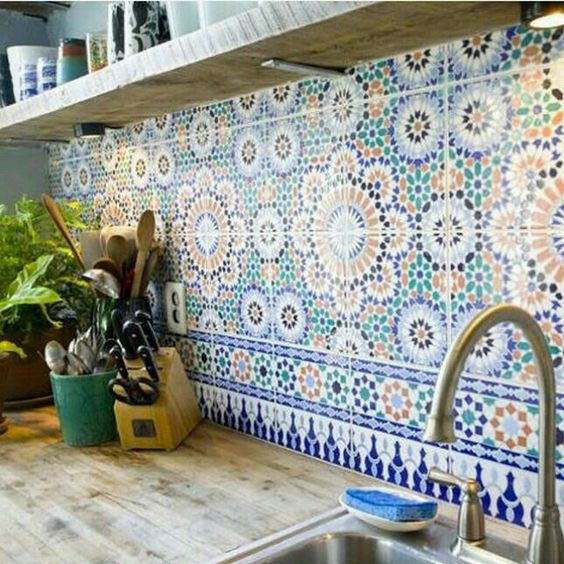
A small mosaic of bright colors will help convey the atmosphere of the countries of North Africa. The pattern laid out with multi-colored details looks original. Variegation is welcome here, but it is advisable to choose materials of the same color scheme, otherwise your eyes may get tired.
Ceiling
It can be traditionally whitewashed with water-based paint. This will save both effort and money. But if you want to especially emphasize the oriental flavor, you can paint the surface using a traditional pattern. For high and uneven ceilings, the best solution is an arched vault. It will hide flaws and give the room a special charm.
The arched structure can be supplemented with small soffits, openwork stucco, moldings or wooden slats.
Furniture selection
Furniture made from natural wood is the optimal solution for any ethnic style. The facades of the set in the spirit of Asia should be smooth, glossy, painted in natural colors. A combination of red, gray with the addition of gold and black is welcome. This palette will fill the space with Asian flavor. A dining table with a glass surface, wicker stools or wooden chairs covered in leather will fit perfectly.

The Japanese version is the easiest to implement compared to other directions. In addition, it is “friendly” with modern technologies, so household appliances can be put on public display.
For a room in the North African version, solid wood furniture in its natural form is suitable - without cladding or painting. You can use white or sand colored options. All surfaces must be matte.
The table is low, with a decorative pattern. You can add low chairs with soft upholstery, a bench or voluminous pillows.
Textiles, accessories, decor
It is impossible to imagine a room with an Arabic flavor without colorful pillows, soft upholstery, massive curtains made of brocade, silk or velvet.
Asian design is distinguished by restraint, therefore a minimum of textiles is used here. The windows have paper curtains or bamboo blinds. Napkins in white, beige or red colors complement the space.
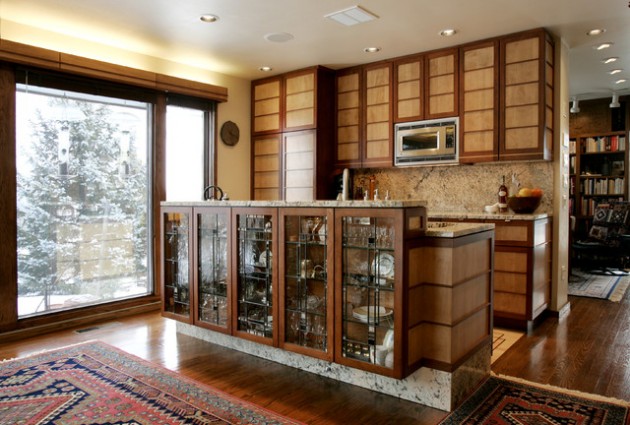
In a spacious Japanese or Chinese kitchen, partitions or screens would be appropriate. With their help you can zone or decorate a room. For decoration it is appropriate to use:
- hieroglyphs;
- watercolor images of birds, plants and people;
- landscape photographs;
- bamboo rugs and decor;
- Fine porcelain products are an invariable attribute of Chinese cuisine.
North African countries are characterized by:
- mosaic, floral and geometric prints on walls, textiles, floors;
- embroidered patterns on furniture upholstery and pillows;
- carving on wooden elements;
- an abundance of textiles - carpets, draperies, tapestries;
- porcelain products decorated with Arabic script.
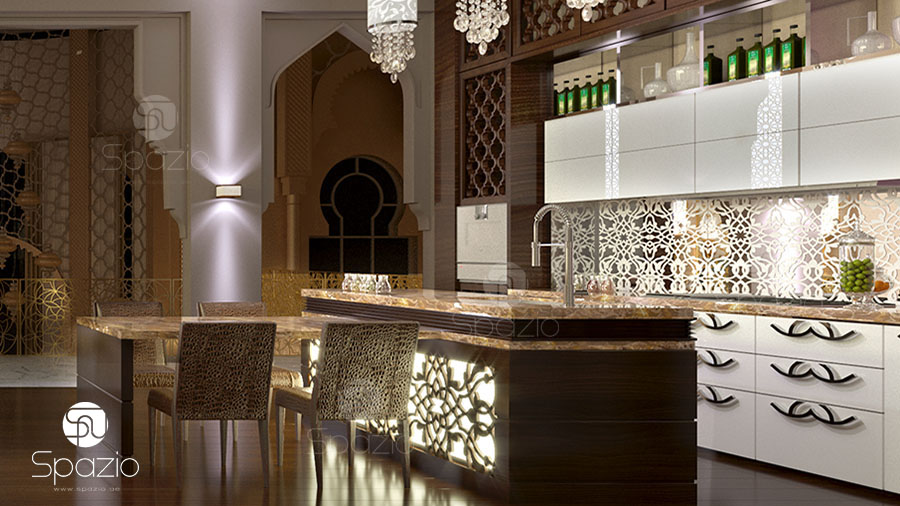
Jugs and other utensils typical of the African style will easily fit into a modern kitchen.
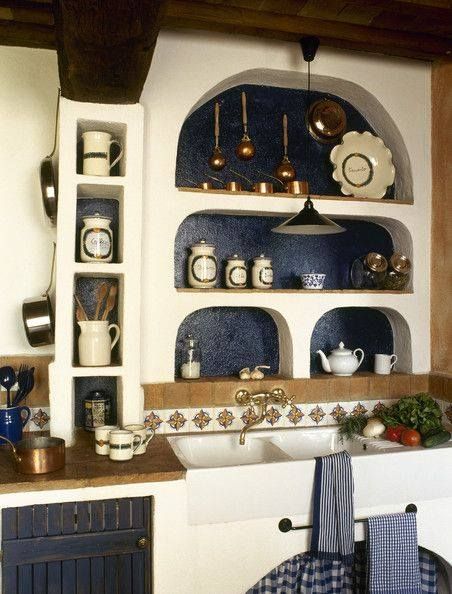
Lighting device
The Arabic and Turkish flavor will be emphasized by a massive chandelier placed above the dining area. You can complement it with small lamps decorated with monograms, crystal pendants and unusual drapery.
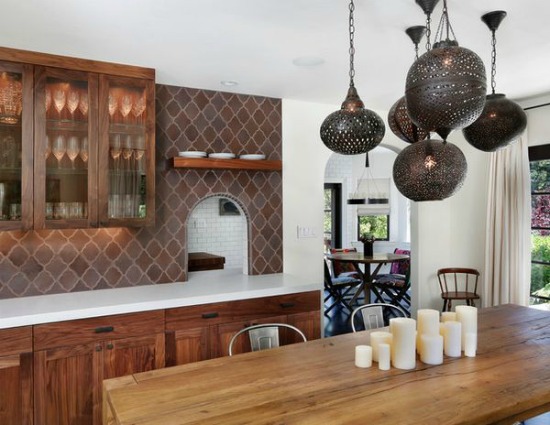
An obligatory component of the Chinese trend is red paper lanterns, golden lamps decorated with hieroglyphs. The Land of the Rising Sun gravitates towards simple geometry. Conventional lampshades and rectangular lamps are especially appropriate here.
The highlight of the Indian vector is table lamps made in the shape of an elephant or shades made of colored glass in combination with brass. Such models are usually made by hand.
Selection of equipment
The basic rules here are the same as when purchasing finishing materials and furniture: brevity, contrast of colors and textures, the best option is wood. Of course, wooden household appliances are quite difficult to find, so you can cover them with facades yourself or purchase a ready-made version.
An African-Asian style kitchen requires discreet appliances. Preference should be given to the most laconic models that will not discord with the general mood and draw attention to themselves. It is better to hide appliances that do not need to be used constantly in the closet.
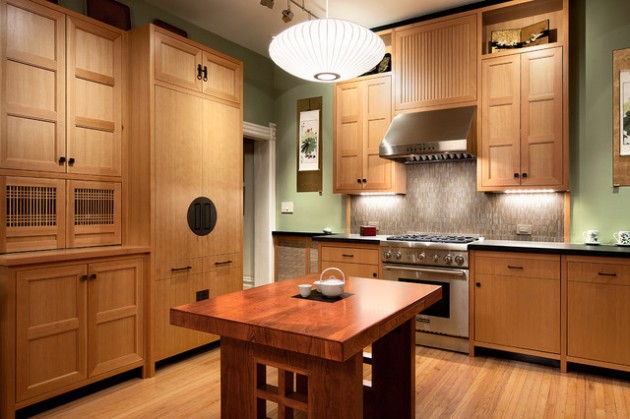
Oriental style is bright and multifaceted, combining the culture and mood of different countries. Only by deciding on the basic design idea can you create a stylish, harmonious room.



